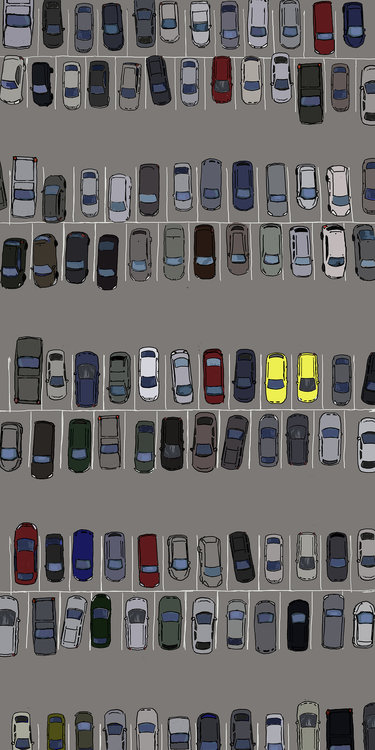Threats must be understood and prepared for but also put in perspective
We had never heard of the Yellow Car Phenomenon until we read Sean Mulkerrin’s story, on our front page this week, ostensibly about an Oct. 7 public hearing on a battery energy storage system proposed for Indian Fields Road in Feura Bush.
This the first BESS proposed in New Scotland since the town adopted energy-storage regulations in April 2024 and three more sites have since been proposed.
Mulkerrin has done an admirable job reporting on potential fire hazards with BESS and on Governor Kathy Hochul’s task force, comprised of employees from five different state departments and divisions, to determine the root cause of the fires. The recommendations made by the Fire Safety Working Group have since been integrated into the latest version of the state fire code.
We commend the state for being proactive in preventing potential hazards. And similarly we commend New Scotland and RIC Energy for seeing that the local volunteer firefighters who will be responsible for safeguarding these facilities and the surrounding communities are trained in dealing with their unique challenges.
This week, Mulkerrin took a deep dive into the data and discovered that, despite the media coverage of dramatic fires at BESS, the data tell a different story.
In the last decade, the number of BESS in the United States has increased exponentially — from 50 in 2015 to 820 now, yet the number of failures has not increased; in fact, it decreased to just five worldwide last year.
Mulkerrin attributes this to the Yellow Car Phenomenon, the idea that, once something is brought to your attention, you start noticing it more often, making it seem like it’s appearing everywhere.
That reminded us of a phenomenon from our childhood in the 1950s. Dings and pits in car windshields became newsworthy in Washington State. Police first thought vandals were using BB guns to scar windshields
As news of the phenomenon spread, more and more people reported marred windshields. Theories for the cause ranged from sand fleas to cosmic rays.
Finally, Governor Arthur Langlie asked a committee of scientists at the University of Washington to investigate. Investigators from the environmental, physics, chemistry, and meteorology departments found the damage to be “overly emphasized,” and most likely “the result of normal driving conditions in which small objects strike the windshields of cars.” The fact that most cars were pitted in the front and not the back lent credence to their theory.
This is now considered a textbook example of collective delusion.
Last year, we all lived through a similar experience with the sightings of drones over New Jersey, which then spread to other states, with many people suspecting malicious intent. Drone flyovers, the Pentagon noted, are common.
As journalists, we’re aware that we need to inform our readers of potential hazards, like BESS fires. But we also need to put those cautions in perspective.
School shootings, for example, must be covered; they are horrendous. But the intense media focus can obscure greater risks facing children. The number of deaths caused by school shootings is statistically small compared to other causes like car accidents or cancer.
And while school shootings loom large in the American psyche, they are just a fraction of the overall deaths of children caused by firearms. Most gun deaths of children are caused by relatives, followed by self-inflicted deaths.
The Centers for Disease Control and Prevention has found that fewer than 2 percent of deaths of children occur at school or going to or from school.
Why does this matter?
Because the resources that go into surveillance or locks or police officers at schools might better be spent on prevention strategies that would curb domestic violence or help with community problems.
“We are the apes who tell stories. And no matter how misleading the narrative, if it is compelling enough it will nearly always trump the facts,” writes William Bernstein in his 2021 book, “The Delusions Of Crowds: Why People Go Mad in Groups.”
Bernstein’s book traces 500 years of mass delusions.
A neurologist and economic historian, Bernstein writes, “Over the course of the twentieth century, neuroscientists discovered that there are two different types of human thought processes: fast-moving emotional responses located in our deeply placed and evolutionarily ancient limbic system, our so-called ‘reptilian brain,’ and much slower conscious reasoning that arises from the evolutionarily newer cortex that overlies the limbic system.”
These two systems in our brains are sometimes at war. The simplistic good-versus-evil narratives most often win out over the abstractions of data and complex answers.
“When compelling narrative and objective fact collide, the former often survives, an outcome that has cursed mankind since time immemorial,” Bernstein writes.
Bernstein does not oppose all group hypotheses. He cites the famous experiment in which children were asked to secretly guess how many beans were in a jar. A nearly perfectly accurate number was arrived at by averaging the children’s guesses.
However, when the children were told to discuss their guesses to come up with a composite result, the number was way off. So what an individual in isolation would see is very different from what is arrived at in a group where some may have strong personalities.
Bernstein looks to scientists for answers and posits that real-world data should be the pinnacle of knowledge rather than being used to justify the irrational conclusions of the limbic story machine.
It was the scientists at the University of Washington, after all, that put to rest the theories on cosmic rays and sand fleas causing windshields to be pitted.
Real-world data and scientific inquiry should guide our actions as individuals and as a nation on everything from vaccination to understanding the causes of autism.
While the pop psychology Yellow Car Phenomenon, which Stanford linguistics professor Arnold Zwicky termed “frequency illusion” in 2005, is worth thinking about, we need as journalists and as well-informed citizens to see what is dangerous, but also to put that danger in perspective.
For example, plane crashes cause just a tiny fraction of deaths compared to other causes. In the past decade in the United States, 14 passengers have died on commercial flights while over 410,000 have died in auto crashes over the same decade.
While it is responsible to write about past BESS fires so that local firefighters can be trained and prepared, it is also essential to see the threat in perspective as we weigh the benefits of BESS, storing needed energy as we transition away from using fossil fuels.
The threats posed by climate change far outweigh the chance of fire at a local BESS. We urge those speaking and listening at the Oct. 7 public hearing to consider the data.

